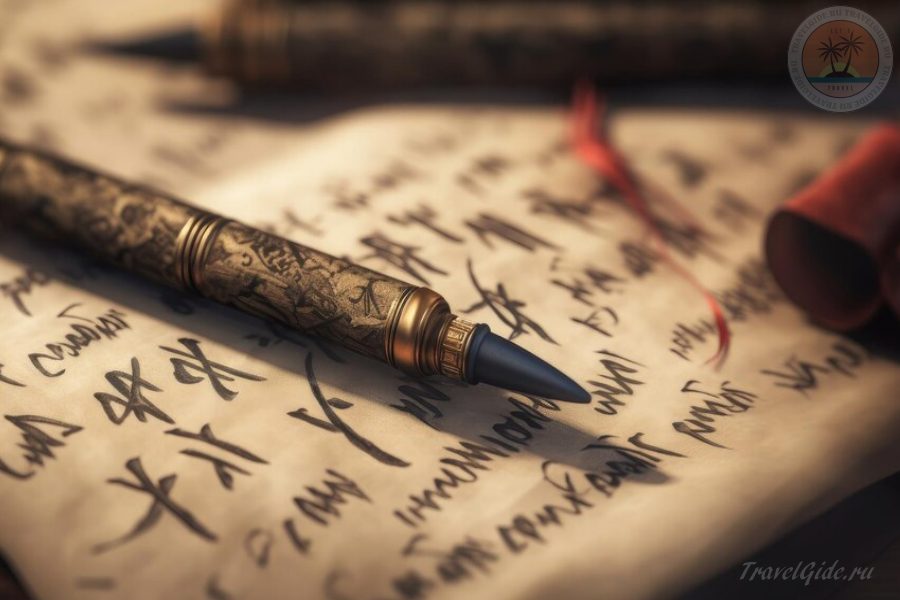Chinese language: dialects, characters and learning
Oofficial language China is Standard Mandarin, known in Chinese as Mandarin (普通话 or "general speech"). It is the only language used in education on the mainland since the 1950s and is therefore spoken by the majority in the country. However, pronunciation varies quite a bit from region to region.
Unless otherwise noted, all terms, spellings and pronunciations are generally in Standard (General or Official) Chinese. Because Mandarin is a tonal language, in order to be understood, it is necessary to use the correct tones when pronouncing words and phrases.
Diversity of language dialects in China
Many regions, especially in the southeast and south of the country, also have their own "dialects", all of which are tonal. They are indeed different languages, as different as French and Italian, although calling Chinese “dialects” separate languages is a politically sensitive issue.

In true Chinese dialects, pronunciation varies greatly and local slang or terminology is often used for variety. After the Mandarin language, several dialects can be called the largest.
THE LARGEST DIALECTS IN CHINA:
- Cantonese, common in southern Guangdong (Canton), Hong Kong and Macau,
- At (Shanghai), common in the area Shanghai and Zhejiang, and
- Minnan (Hoklo, Hokkien, Teocheu), common in the area of Xiamen, northeastern Guangdong and Taiwan.
Two short videos from the capital of China
Many Chinese speak two languages - local and Mandarin. Some older, less educated, or people from rural areas may only speak the local dialect, but this is unlikely to make any difference to the overall picture.
It is generally helpful to have a guide who speaks the local language, as this marks the person as an insider and you as the insider's friend.
However, there are many reliable stories of travelers who, absolutely not knowing any of the dialects of Mandarin or any other, quite successfully traveled around the Celestial Empire, having prepared signs at home in advance with all kinds of wishes, requests and questions...
Generally, almost all Chinese understand spoken Mandarin, even if they cannot answer it in any other way than in their local dialect.
Of course, it goes without saying that knowing a few simple phrases and sentences in local dialects will greatly enrich your tourist experience and will usually bring smiles and approval from the locals.
Features of the hieroglyphs used
Regardless of the dialect, the official written language is always the same. Even Japanese and Korean use the same characters with the same meaning. However, there is one difficulty here. Mainland China uses "simplified characters", adopted many years ago to make writing easier.

Traditional characters are used in Taiwan, Hong Kong, Macau and many overseas Chinese, as well as on the mainland in advertising and commercial signage. As a result, you'll see 银行 (yinhan) just as often as you see 銀行 for "bank."
However, the simplification was quite systematic, which means that all is not lost for the traveler trying to master the skills of reading signs.
On the other hand, native speakers usually have no problems reading either script, so learning to write in one of them will be quite enough.
Note that in calligraphy, the number of fonts is much more varied, as different artists use different unique styles, although they are grouped into five different styles. This zhuanshu (篆书/篆書), I'll deprive (隶书/隸書), Kaishu (楷书/楷書), xingshu (行书/行書) and kaoshu (草书/草書), of which Kaishu is the official script used in China currently.

When writing calligraphy in Kaishu, traditional Chinese characters are usually used, due to their higher aesthetic value. The casual traveler can easily do without studying the other four styles, although knowledge of them will certainly help those with a deep interest in traditional Chinese art.
In the far west of the country, Turkic languages such as Uyghur, Kyrgyz and Kazakh, Russian and Tibetan, spoken by some non-Han ethnic minorities. In the northern and northeastern parts of the country in other minority languages such as Manchurian, Mongolian And Korean (China has the largest Korean population outside the Korean Peninsula) is also spoken in areas inhabited by the respective ethnic minorities.

Yunnan and Guangxi provinces in the south of the country are home to many other ethnic minorities such as moso, Miao and Nasi, who speak their own languages. However, as a rule, you can use general Chinese. Unfortunately, some minority languages, such as Manchu, are gradually dying out.
For those who speak English
Although most Chinese learn English in school (in fact, English is compulsory from junior high onwards) and passing an English exam is a requirement for higher education, the focus is on formal grammar and writing rather than spoken language.
As a result, few people master the English language well enough to be able to participate in a conversation in English. Outside of major cities and major tourist areas, it is quite rare to find locals who speak English.

However, the few locals who have studied English as a second language at university (especially if they have studied abroad) tend to have a good or very good command of it.
Good advice: it is often useful to try to simplify your English, as if not striving for the ideal of sentence structures.
Don't use complex phrases like "Do you mind if I come tomorrow?", but stick to simpler and sharper phrases like "I'll be back tomorrow." This brings the phrase closer to its Chinese equivalent and therefore does not necessarily become an impolite form of communication.
Learning Chinese
In the West, Chinese has an undeserved reputation for being difficult to learn. Although it is very different from English and other Western languages, there is no reason why a traveler cannot learn to speak Chinese.

Written Chinese is notoriously difficult and requires a lot of studying to master it. However, by learning to recognize only a limited number of characters, you can get the information you need. Perhaps this is even easier in Chinese than in languages with an alphabetic writing system, since in these languages it is impossible to understand anything until you know the entire alphabet and have acquired the necessary vocabulary.
Basic Chinese grammar is quite simple, with the main difficulties being pronunciation and the use of tones.
In Chinese, it is relatively easy to find characters for, for example, “Internet cafe” or “fried noodles” without knowing anything else about the language. If you have a good visual memory, you may even be able to figure out what a sign means without being able to pronounce it—a useful skill, even when it comes to distinguishing “exit” 出口 from “input” 入口.
To bridge the gap between visual recognition of hieroglyphs and reading, it was developed pinyin system, using the Latin script as an aid in teaching Chinese.

Pinyin pronunciation is not intuitive for English speakers, since the letters and combinations are not the same as usual, but studying it even at a basic level is already of great practical value for every traveler.
Do you think Chinese is difficult?
Understanding the local dialect, often quite different from standard Chinese (Mandarin), can be useful when traveling to more remote areas. But even in these areas, a phrasebook with Chinese characters will be very useful, since written Chinese is approximately the same everywhere.


